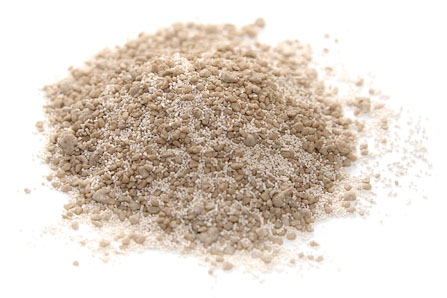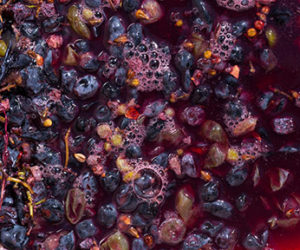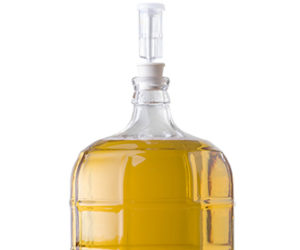 According to academics and professionals, if you want to pick the right yeast for your grape juice, knowing what questions to ask is essential.
According to academics and professionals, if you want to pick the right yeast for your grape juice, knowing what questions to ask is essential.
“I view it more as not who do I rule in, but more who do I rule out?” said Dr. Linda Bisson, professor of enology at University of California, Davis, whose specialty is yeasts.
“There’s all these factors to take into account,” said Lucy Joseph, who is the curator for the UC-Davis enology department’s collection of cultures, which includes both yeasts and spoilage microbes. There are also many, many different strains of wine yeast from which to choose.
Yeast companies bank hundreds of strains, but most of these aren’t available to the home winemaker.
The main job of yeast is to ferment the wine, changing the sugars in the grape juice to alcohol. Because yeast is a living organism, it needs the same two things to survive: carbon, which in the case of yeast means sugar, and nitrogen.
“You’re growing yeast in this juice and you want it to be happy,” Joseph said. But yeast can also be an important component of a wine’s flavor profile.
“There’s multiple ways that yeast can influence the flavor,” Bisson said. “One is that it can make flavors, the second is to modify flavors from the grape and the third is to simply enhance the grape,” which is why Bisson believes that your first decision is stylistic.
“Do you need to add to [the juice’s] complexity?” she said. “Do you want to enhance the complexity or boost what’s already there?” She said that in a lot of Burgundies and Bordeaux, in particular, a significant portion of the flavor is from the native yeast of the region.
“Some wine styles, if you’re trying to copy them from Old World regions, a lot of the flavor and the characteristic appeal comes from the yeast,” Bisson said. “Some of the Bordeaux styles, the Burgundians, the microbials make a much stronger contribution, so a Cabernet produced in France would have a lot more of a microbial signature.”
According to the pros I spoke with, the flavor of white wines is much more easily affected by the yeast than reds.
“I think in white varieties, yeasts tend to make a huge difference,” said Kerry Damskey, who is not only a winemaker at Huntington Wines in Napa, California, but is a consultant for other winemakers.
He explained that because reds sit on the skins during fermentation, there are more elements going into the flavor profile of a red wine.
“Whites, you’re not fermenting on the skins, so the delicate character of the juice can come out,” Damskey said. “Yeast is less important with reds.”
“You’re trying to obtain more floral notes with whites,” said Ben Mayo, winemaker at Eberle Winery in Paso Robles, California. “You don’t want your reds to smell like tulips.”
“We do a combination of inoculated and non-inoculated,” said George Bursick, winemaker at Ferrari-Carano, in Healdsburg, California. “On the red side, we’ve only looked at about 10 yeasts. On the white side is where we really go nuts.”
Joe Benziger, who makes wine for the Benziger Winery’s high-end Imagery label, said that he not only likes to use wild yeast for one of his Chardonnays, he ages it on the lees.
“We actually go into the barrel and mix that yeast up into the wine,” Benziger said. “It gives it a little more texture.”
Even so, Mayo said that he uses a yeast called Lalvin T73 for his Italian varietals, not only because of its fermenting properties, but for its effect on the esters of the wine.
“It really pulls a lot of that banana smell out of our Sangiovese and Barbera that we make,” he said.
Style decisions have as much to do with what you’ve got in your fermenter as what you hope to end up with. After all, you’re not going to make a light, crisp wine out of dark Syrah juice. But you could make a slightly sweet Syrah if you want to leave some residual sugar, in which case, you’re not going to want to use a particularly hardy yeast known for completing fermentation, such as Pris de Mousse.
“That’s the workhorse,” said Eric Aafedt, winemaker at Bogle Winery. “It’s really solid. It finishes clean.”
Joseph said that looking at the charts on the Lallemand and the Lesaffre (Red Star) sites, you can eliminate those yeasts which are not appropriate for your grapes. Although Bisson cautioned you’ve got to be sure to look at all of the characteristics of a yeast before picking one.
“The second critical issue is that you’re using a yeast that can survive what you’re doing to it,” Bisson said.
For example, if you’re going to do a malolactic fermentation, you want to be sure that your yeast will not interfere with it, as some do.
Another issue is the speed of fermentation. Many winemakers agree that a slower fermentation can add layers of flavor to a wine. For practical reasons, however, they may have to turn their tanks around in a certain amount of time to accommodate what’s coming in from the fields.
Even without the pressure of having to turn tanks around quickly, no winemaker wants to deal with a stuck fermentation. “You want a yeast that is clean fermenting,” said Aafedt.
In fact, that is a major reason why a lot of commercial winemakers stick with the tried and true yeasts that they know will finish fermentation at the point they want it to finish. Aafedt said that he uses Lallemand’s D254 for most of his reds.
“Generally, we’re trying to pick a little later, therefore you need a little more alcohol tolerant yeast,” he said.
However, with Chenin Blanc, which he wants to finish with about one percent residual sugar, he uses Epernay 2. “It’s not a very alcohol tolerant yeast,” he said. “It’s also very cold sensitive.”
Bursick and Benziger, however, prefer slower fermentations, even with the risk of a stuck fermentation.
“I’m looking for wimpy yeasts,” Bursick said. “I want long and slow but will finish. Pretty much the strains that I use are not for the faint of heart.”
Bursick likes the flavor development that a slow fermentation gives him, even as he enjoys experimenting with different strains. “I go for some of these oddball strains,” he said. “We also culture. We have our own strains that we keep. It’s just my feeling that a lot of these mass-marketed yeast strains are really produced to be easy fermenters and a lot of people like that. A lot of people like to sleep at night.”
“My first choice is to use the natural yeast,” Benziger said. “The distinctive flavor from the yeast is a big part. I try when I have a vineyard to use the yeast on the property.” And while that can be a little nerve-wracking, Benziger said that he’s not thinking about turning over fermenters in a timely fashion.
“We make sure we have enough fermenters,” he said. “You cannot cut the fermentation process. If we need to do a cold soak, if we need to have an extended maceration, if we need a fermenter, we’re not going to cut it short.”
Aafedt said that sugar levels are critical in choosing a yeast. With a higher Brix reading, you’re looking at a higher alcohol level and will want a yeast that can ferment to that level.
Commercial winemakers also rely on a battery of tests to tell them how much food, in the form of nitrogen, that they need to add, because some yeasts require extra nitrogen. The problem for the home winemaker is that these tests require specialized equipment to perform.
For commercial winemakers, consistency in their wines is critical. When consumers see a bottle of Bogle Merlot on the shelf at the local supermarket, they’re more likely to pick that bottle if they believe that the Merlot inside will be the same as the Bogle Merlot they picked up last week. Obviously, the main component of that is the grapes. And the winemakers we spoke to all agreed that knowing their vineyards and the fruit they produce is a key element in choosing which yeast they will use each year.
“It really comes down to you want to pick a yeast that’s going to marry well with the fruit coming in,” Mayo said.
But that doesn’t mean that they don’t experiment with different yeasts. Bursick is particularly fond of experimenting to the point that he said the Lallemand sales reps know that he’ll try whatever new strain they have. “If something comes out new, we look at it immediately,” he said.
In fact, he picks a block of grapes to experiment with every year. “It’s just a kind of controlled kind of experiment,” Bursick explained. “It really comes down to if there’s a block that I’m not really happy with, then how can we make this better?”
But he’s not just throwing things at a given lot. His experiments are carefully controlled, making sure that all the other elements are the same across the four or five different portions he’s split the lot into, from how much nitrogen and other additives he puts in to the temperature control.
“And then we taste it and it’s got to taste good,” he said. “It’s really easy to do on the small scale. You’re like a mad scientist.”
Bisson said that experimenting is crucial even for the home winemaker, although it does take some patience. “It’s how people fine tune their recipes.”
“You do your homework, you read up,” Benziger said. Experimenting is important, but so is going into the process having a plan.
“The idea is to choose a yeast that’s going to ferment to dryness and also give you the most extraction of flavor during that process.”






